A couple of weeks ago I watched a short tutorial on taking long-exposure photographs in broad daylight, using a 10-stop Neutral Density (ND) filter. The long exposures smooth out slightly-moving textures (such as water), resulting in a dreamy-quality photograph that I found very attractive. I filed it under “must try out at some point”, largely because two weeks ago I didn’t own either an ND filter, or a cable release. Both are absolutely required to try this out, as is a tripod, obviously.
This morning I found that the Obsessive Mountain Biker had stopped riding trails for long enough to order the two missing pieces of equipment for me! My little surprise package contained an ND400 filter and a cable release.
ND400 is a 9-stop (rather than 10-stop) filter, and even that was hard to come by. Still, only 1 photon in 400 reaches the camera so that should surely be fine, right?
I attached the filter and the cable release and tried to take a picture. The first two learning points presented themselves immediately:
- 1 photon in 400 reaching the sensor means you cannot frame a shot with the filter attached. For all practical purposes that’s like trying to frame a shot with the lens hood still on.
- For the same reason, autofocus is right out as there is not enough light to use it.
So, I take the filter off again, frame the shot, put the filter on again, take off the eye piece, attach the eye piece cover. This is a sequence I will shortly become very good at.
Cable release, 1s. That’s about as short as I can manage using bulb exposure. This shot serves as comparison. The water shows clear ripples. (Click the thumbnail to see a full-size version.)
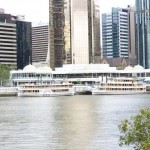
Optimistically, I tried the 2-min exposure recommended in the tutorial. Result: A completely white “picture”. It would seem that the difference between a 9-stop and a 10-stop ND filter does actually matter. So, I try again, using a 60s exposure. Success:
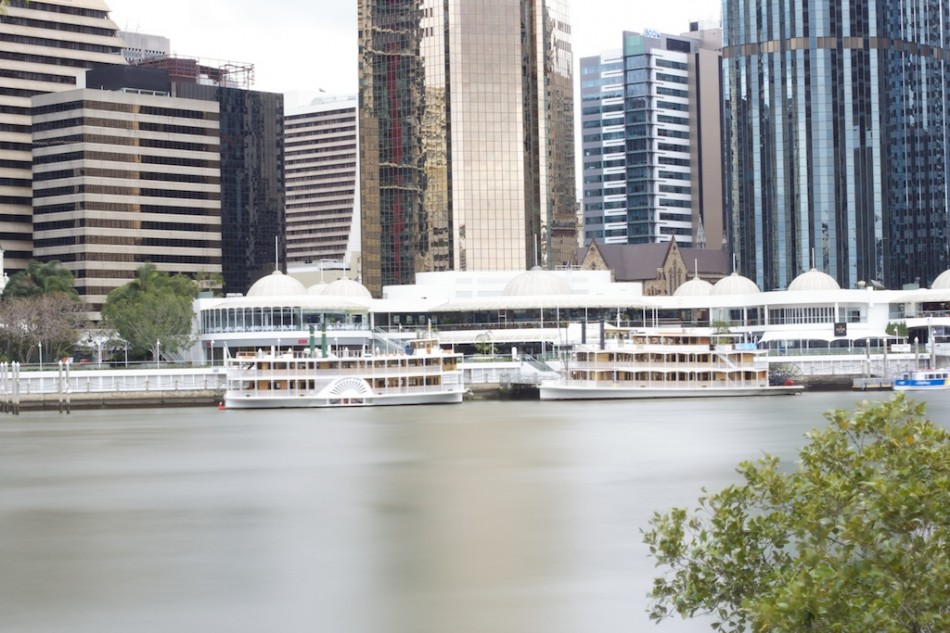
Note how the water has taken on a smooth, silky texture.
Since I was still getting far too much light I switched from using my colossal light bucket (er, I mean, 50mm prime lens) to a 18-55mm kit lens. It is far inferior to the prime lens, among other things because it captures less light, which, in this case, is exactly what I wanted. Here is the same shot taken with the kit lens, also at 60s.
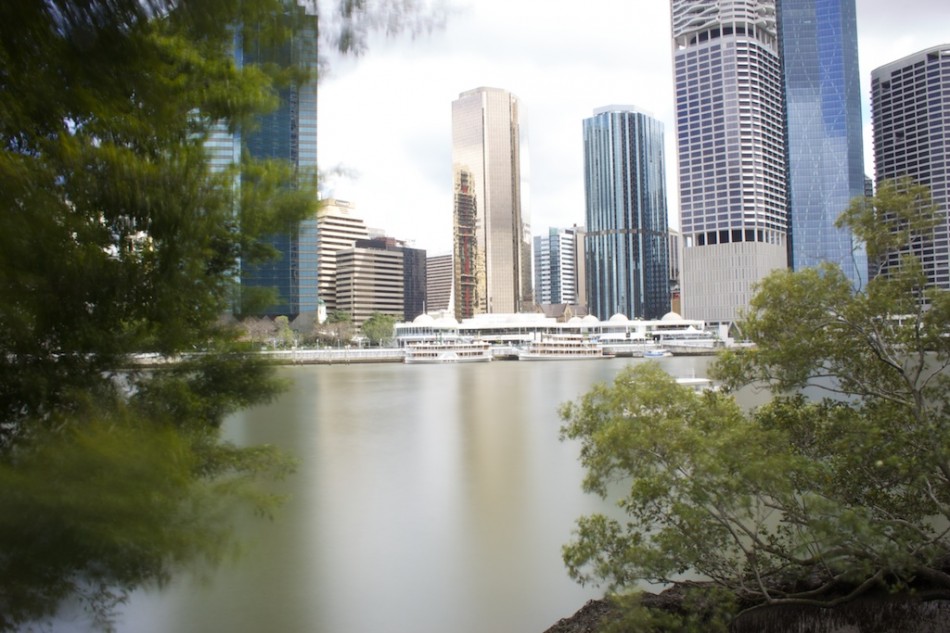
This is looking good. Time to have some fun. This is Eagle St Pier, taken with a 90s exposure:
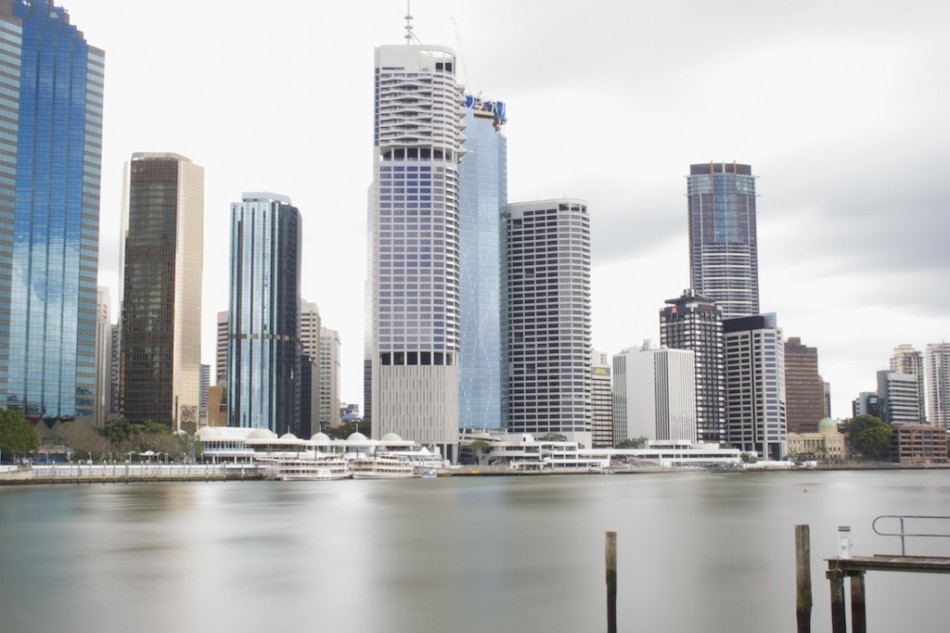
And finally, a ferry docked at Thornton St during this 60s exposure. You can see its ghosted image.
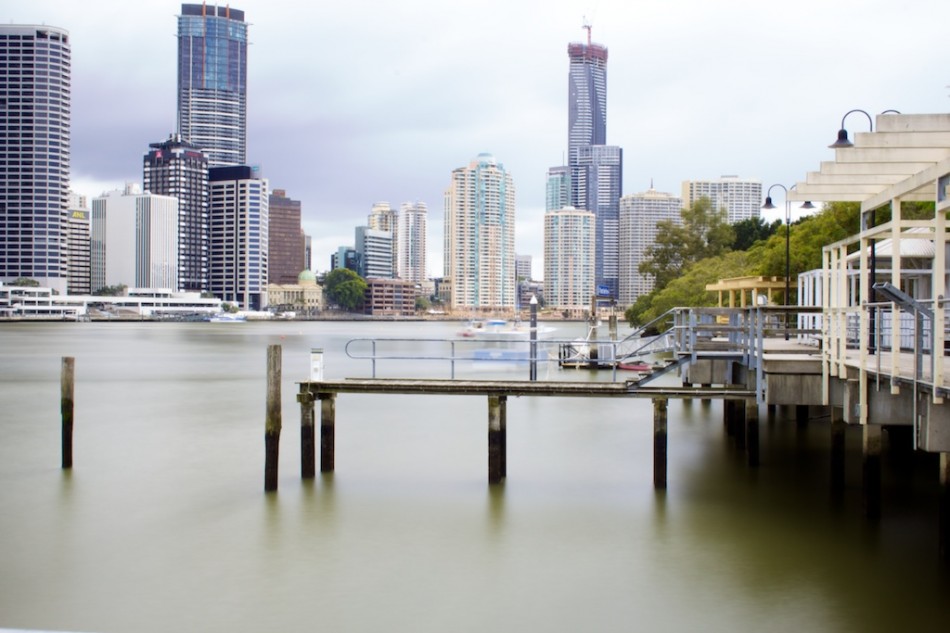
All photographs in this post were post-processed with the exposure turned down in Aperture. This is to get decent exposure for the buildings in the backgrounds without losing the silky water texture.